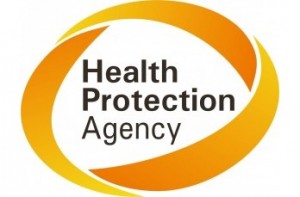A mobile X-ray unit, which identifies people with TB infection in hard to reach communities has proved a cost effective way of treating people with TB in London. These findings are published in the British Medical Journal and also presented at the HPA’s annual conference – Health Protection 2011 – at the University of Warwick on Wednesday 14th September 2011.
 |
| [relatedPosts title=”Related Posts”] |
|
|
The service visits locations where people at high risk of TB can be found, including drug treatment services and hostels or day centres for the homeless. All individuals are screened on a voluntary basis, and if found to be infected, they are followed up closely alongside hospital teams to support them in completing their treatment for a duration of six months. Failure to complete treatment increases the risk of onward transmission as well as encouraging antibiotic resistance in the TB bacteria.
A total of 9,040 cases of TB were reported in the UK in 2009 with the majority of disease concentrated in urban areas. London accounted for 38% of cases, with 3,440 cases reported to the HPA, equating to a rate of 44 per 100,000.
The London-based ‘find and treat’ intervention costs around £6,400 – £10,000 for every year of life in good health which it provides the targeted population. This is usually regarded as an excellent use of NHS resources. Typically the NHS will fund interventions that cost less than £20,000 for every extra healthy year of life they provide.
Dr Peter White, a study author who is head of modelling and economics at the HPA and has an academic appointment at Imperial College London, said: “With TB numbers remaining high in London, the ‘find and treat’ programme was identified as a potential method of tackling the problem in these high risk populations. It has proved to be successful in identifying and offering treatment to those unaware they were infected with TB.”
Research from 2003 found that hard-to-reach groups in London such as homeless people, problem drug users and prisoners were about 10 to 30 times more likely than the general London population to have TB. Since 2007 on average each year the ‘find and treat’ service identifies 16 people with TB in the hard-to-reach population, who may not have been identified and treated and also manages and supports the treatment for a further 100 or more cases.
Lead author, Dr Ibrahim Abubakar, head of the TB section at the HPA, said: “While this intervention alone will not reverse the rise in TB in London, it is likely to have an effect on the segment of the population with the greatest evidence of ongoing transmission.
“London has seen a resurgence of tuberculosis on a scale not seen in any other western European capital in the last two decades. The number of new cases of TB every year in the London Borough of Brent, London is comparable to that in Karonga district in Malawi. It is therefore appropriate that any intervention that provides a cost effective means to identify cases promptly and ensure that they complete treatment is an essential component of the tuberculosis control programme.”
Further Information on TB & the ‘find and treat’ service:-
- A copy of the paper ‘Dedicated outreach service for hard to reach patients with tuberculosis in London: observational study and economic evaluation’ is available here.
- An abstract of the paper presented at the HPA conference is available here.
- On average each year the find and treat service identifies 16 and manages 123 active tuberculosis cases in the hard-to-reach population. The service has a net cost of £1.4 million a year and gains at least 220 quality adjusted life years (QALYs). A QALY is a mathematical expression that scientists use to measure the health of a population. It can be compared to the cost of a treatment in order to decide whether the treatment is good value for money for the National Health Service. The service costs about £6,400 – £10,000 for each QALY gained. The two arms of the service are a Mobile X-ray Unit (for screening people to identify undiagnosed cases) and a case management support team. The Mobile X-ray Unit and the case management support arms respectively cost about £18,000 – £26,000 and £4,100 – £6,800 for each QALY gained.
- Since September 2007 the tuberculosis find and treat service has been funded by the Department of Health with a mobile X-ray unit for active case finding, case holding and treatment completion support for hard-to-reach groups in London.
- The Health Protection Agency’s annual conference – Health Protection 2011 – was held at the University of Warwick from 13-14 September. The conference offered a variety of innovative presentations which demonstrated the latest scientific research and its practical application in three key areas of health protection – preventing and reducing infectious diseases, minimising the impact of radiation, chemical and environmental hazards and preparing for potential or emerging threats to health. To find out more information visit: www.healthprotectionconference.co.uk




